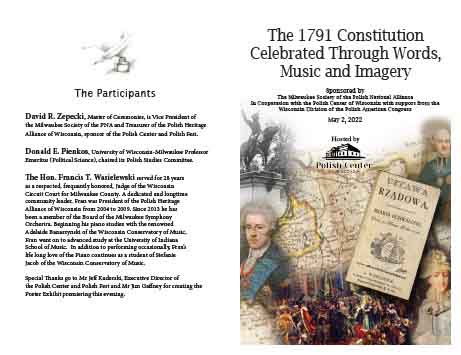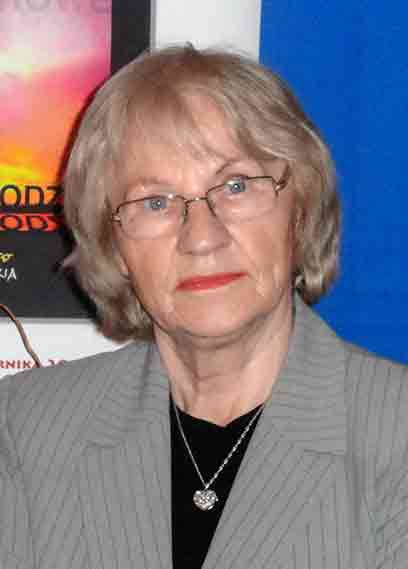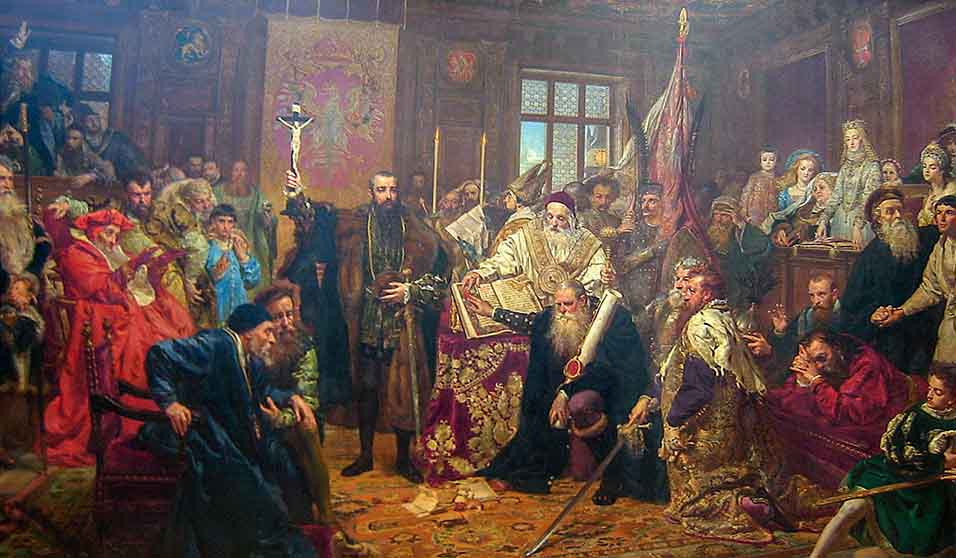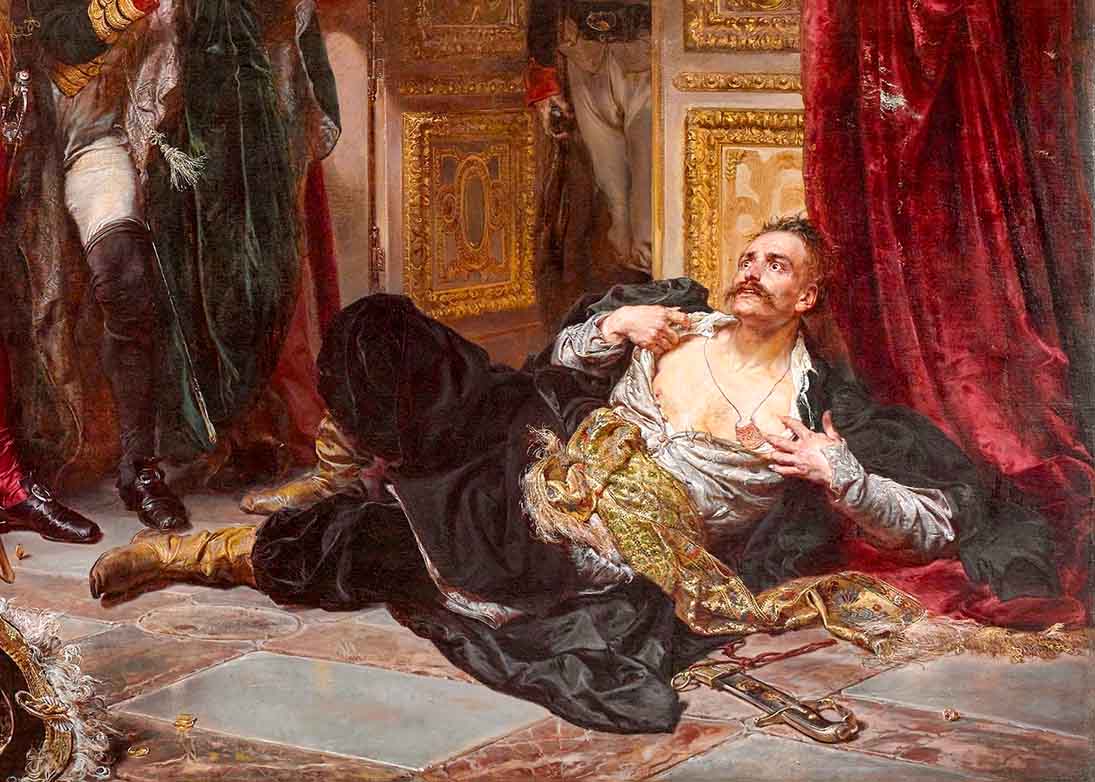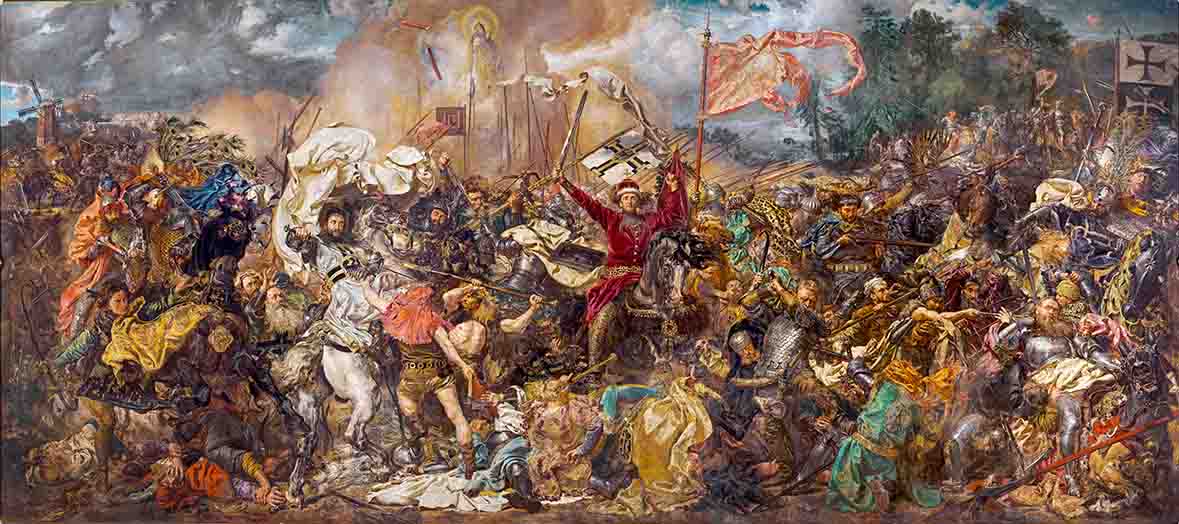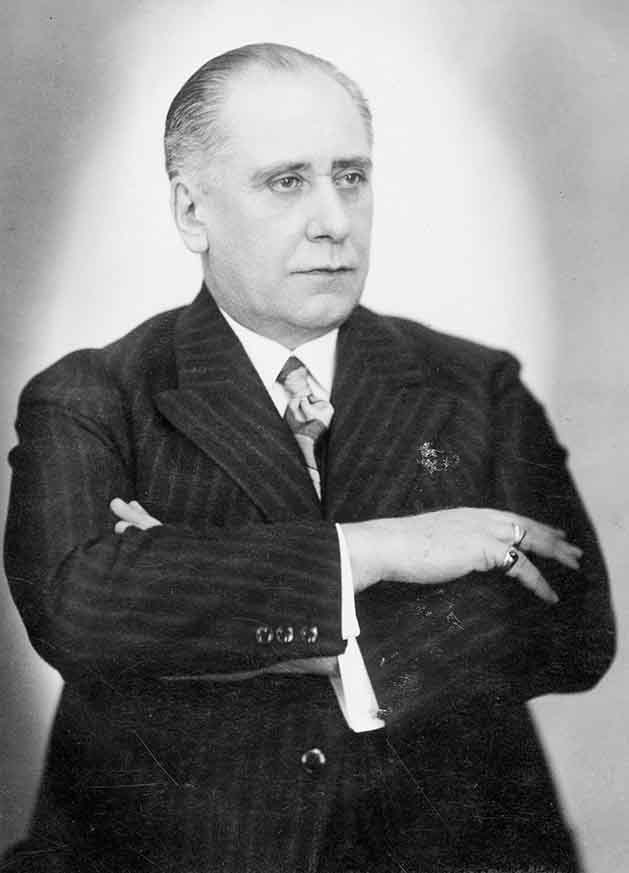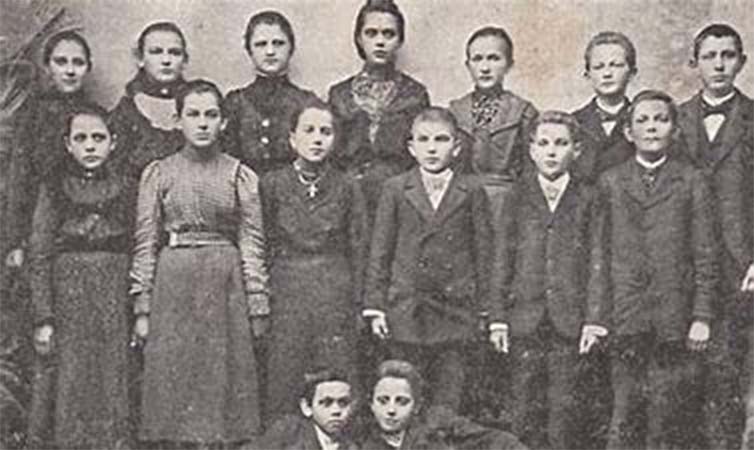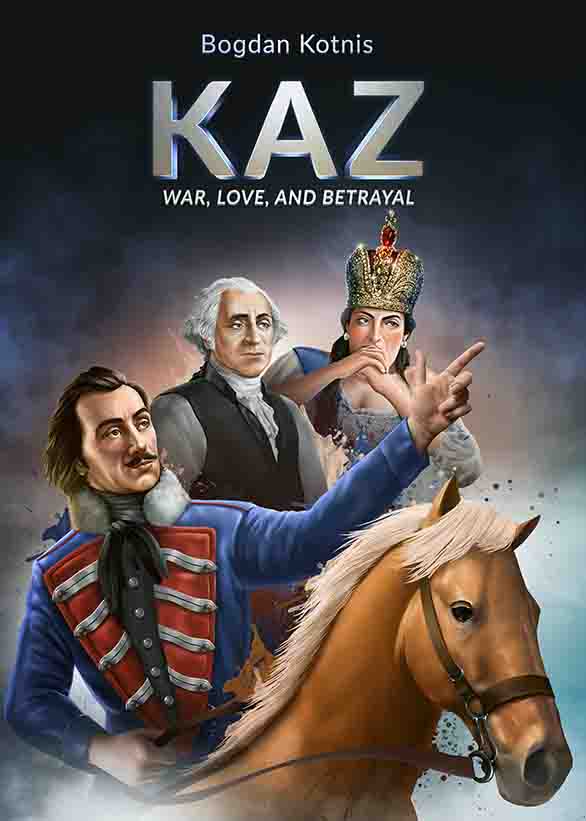The beginning of May has been bringing joy to Poles for a long time now, so that they can rest and commemorate one of the most important events in the history of our country and our nation, which was the passage by the Four-Year Seym called the Great, of the Government Act known in history as the Constitution of May 3.
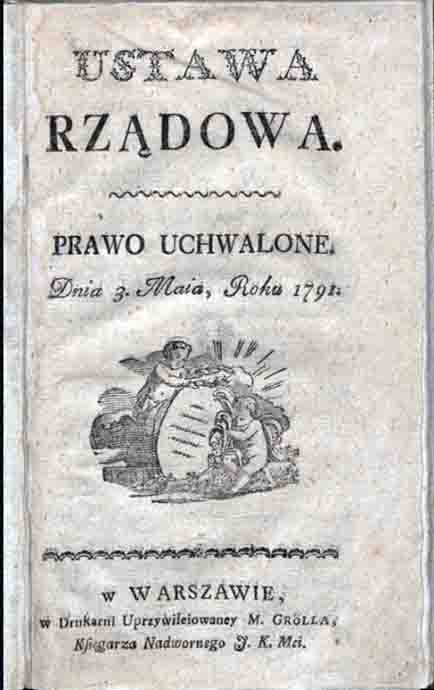
Source: Polona.pl (public domain)
A constitution (the word comes from the Latin constitutio — establishing) is a legal act of the highest force. It is a basic law that defines the fundamental principles of the state's political and economic system. It also indicates the legal status of people living in it.
The first constitution of the modern world was the United States Constitution, which entered into force on March 4, 1789. The second, and the first in Europe, was the Polish Basic Law announced on May 3, 1791 at the Royal Castle in Warsaw, today known as the Constitution of May 3. This piece of legislation — and its consequences — have a complicated but noteworthy history.
In the second half of the 18th century, Poland was a territorially large country in Europe, with over 730,000 km² (281,854 sq. miles) of territory, but with a weak political system. It did not have enough standing troops to defend its borders, it did not have stabilized taxes, and there was anarchy within. New powers, such as Russia, Prussia and Austria, were emerging next to Poland and wanted to expand their territories at its expense. To maintain its independence, Poland needed systemic reforms.
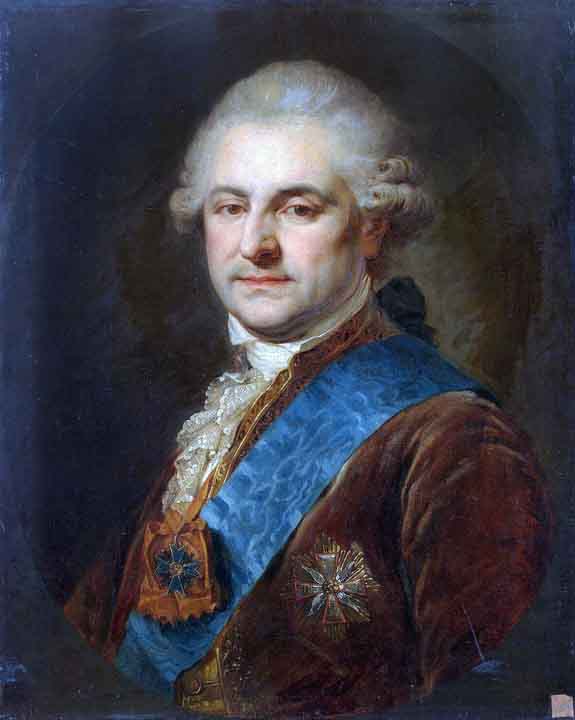
King Stanisław August Poniatowski, one of the co-authors of the Constitution of May 3, painting by Johann-Baptista Lampi (1751-1838), Hermitage Museum in St. Petersburg (Source: Wikipedia)
In 1764, Stanisław August Poniatowski, an ethnic Pole, became the king of Poland, with strong support from Russia. He was a man of the Enlightenment age, educated, he understood the necessity of change. With the help of a group of enlightened patriots, he began his rule with a reform of the treasury and education.
The first attempts at Polish reforms already caused concern with the neighbors, Russia, Prussia and Austria, who signed a secret agreement in 1764, in which they undertook to jointly act against the Polish Commonwealth, when they considered their interests to be threatened. They secretly developed a strategy to detach some land from Poland as compensation for mutual political services. The decision on the first partition was made in February 1771 in St. Petersburg, and the Poles were forced to convene the Sejm and sign the partition act. Other European countries recognized this partition.
It became clear that in order to retain the remnants of independence and recover from the collapse, profound state reforms must be carried out.
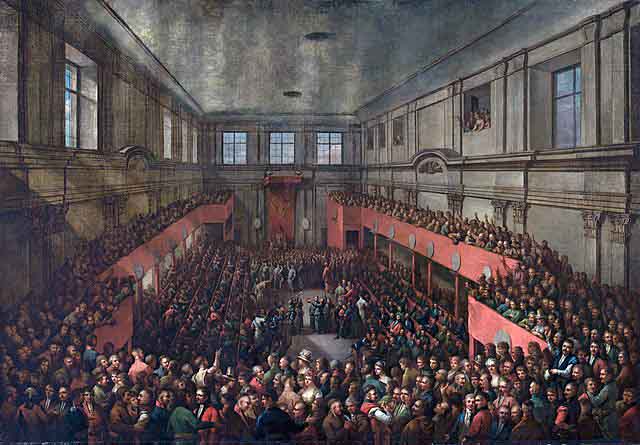
The adoption of the Constitution of May 3, a painting by Kazimierz Wojniakowski from 1806 (Source: Wikipedia)
In 1788, the Seym was convened, which continuously debated for four years, and the result of its deliberations was the project of a great reform of the state contained in the Government Act, today known as the Constitution of May 3.
Several enlightened people from the patriotic party worked on the project of political changes and their respective legal provisions. The most active were: King Stanisław August, Marshal of the Four-Year Sejm Stanisław Małachowski, Ignacy Potocki and Hugo Kołłątaj.
During the deliberations, many deputies were against the changes contained in the draft Government Act, therefore the patriots took advantage of the opportunity that arose in the spring of 1791, during the Easter break in the deliberations. They personally summoned deputies to the Royal Castle in Warsaw and, after a seven-hour deliberation over the entire project, approved the Act, and the king signed it. This act was described as "the last will and testament of a dying motherland." After the proclamation of the Constitution, the envoys marched in a majestic parade to St. John's Cathedral to be solemnly sworn in. This moment, a hundred years later, was immortalized in his monumental painting by Jan Matejko.
The Constitution of May 3 remained an unfinished work. Its co-author, Hugo Kołłątaj, announced the ongoing work on "an economic constitution ensuring the right of property to all and ensuring the protection and dignity of all work." The third document that Kołłątaj dealt with was the "moral constitution", probably the Polish equivalent of the American "Bill of Rights" and the French Declaration of Human and Citizen Rights.
The Constitution of May 3 had a fateful effect and laid the legal foundations for a modern state:
- abolished liberum veto
- established a tripartite division of powers – legislative power was awarded to a bicameral parliament; executive: royal - council; judiciary: independent courts
- it gave equal rights to the nobility and the townspeople
- looked after the peasants, which was a promise of giving them personal freedom
- ensured the defense of the state by maintaining a standing army (100,000) and providing financing for its maintenance, through taxes
- ensured freedom of religion
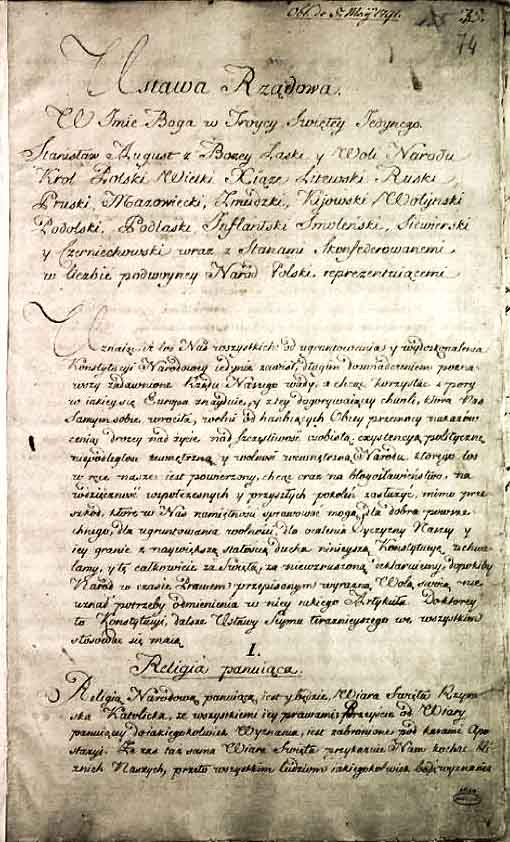
Manuscript of the Polish Constitution of May 3, 1791 (Source: Wikipedia)
The significance of the Constitution of May 3 was highly appreciated by Edmund Burke, Irish philosopher and politician, founder of modern conservatism, who stated:
We have seen anarchy and servitude at once removed; a throne strengthened for the protection of the people, without trenching on their liberties; all foreign cabal banished, by changing the crown from elective to hereditary. (...) Not one man incurred loss, or suffered degradation. All, from the king to the day-labourer, were improved in their condition. (...) To add to this happy wonder (this unheard-of conjunction of wisdom and fortune) not one drop of blood was spilled; no treachery; no outrage; no system of slander more cruel than the sword; no studied insults on religion, morals, or manners; no spoil; no confiscation; no citizen beggared; none imprisoned; none exiled. [2]
The Constitution was very positively assessed by George Washington in a letter to his adjutant, David Humphreys, in July 1791:
Poland, by the public papers, appears to have made large and unexpected strides towards liberty, which, if true, reflects great honor on the present King, who seems to have been the principal promoter of the business. [1]
Unfortunately, the constitution was only in force for 14 months. On April 27, 1792, in St. Petersburg, a confederation called later Targowica was formed, led by magnates: Szczęsny Potocki, Ksawery Branicki and Seweryn Rzewuski. In the Government Act, magnates lost most of their privileges. They could no longer bribe the land-less nobility to vote for them, as the Constitution deprived them of the right to vote.
At the "request" of the magnates, the combined forces of Targowica (20,000 soldiers) and the Russian army (97,000 soldiers) entered Poland. The king was only able to oppose them with an army of 37,000. Seeing no chances of victory, he turned to the side of Targowica. The initial successes of the Kościuszko Uprising did not tip the balance. The war with Russia ended in defeat, the third partition, and in the end, Poland disappeared from the map of Europe for 123 years.
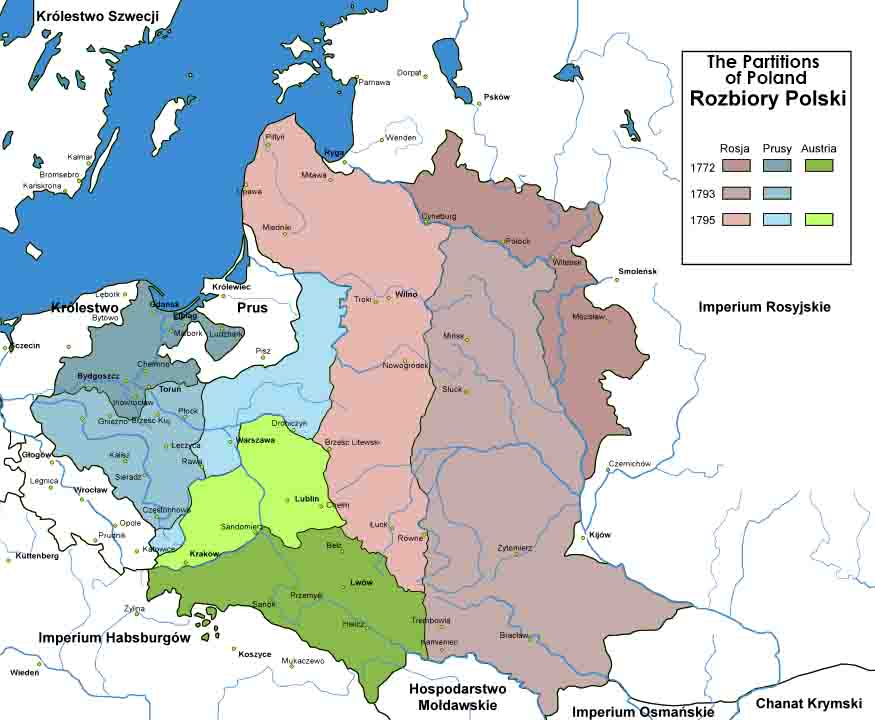
The partitions of Poland (Source: Wikipedia)
The Constitution of May 3 left a deep mark on the minds of Poles. The third day of May was a public holiday until the third partition. After that, the celebration was forbidden in all partitions. After regaining independence in 1918, for 20 years, May 3 became a public holiday again. Celebrations were banned again during the German occupation during World War II and during the communist enslavement by the Soviet Union. In 1981, the people's government allowed the May 3rd celebration, and since 1989, the May 3rd Constitution Day is again a national holiday.
Translation from Polish by Andrew Woźniewicz
A Message from the Polish American Congress – Wisconsin Division
The May 3 Constitution Day celebration will be held on Monday, May 2, 2022 at the Polish Center of Wisconsin (6941 S 68th St, Franklin, WI 53132, Tel. 414-529-2140). The Polish American Congress - Wisconsin Division directly supports this event.
Everyone is invited to attend, along with families and friends. The program, entitled The 1791 Constitution Celebrated Through Words, Music and Imagery, starts at 7 P.M. The doors of the Polish Center open at 6:00 P.M. for the wine and cheese reception.
More details can be obtained from the brochure below:
It's worth mentioning that the day of the celebration, May 2, is notable on its own. Since 2004, on May 2, we celebrate Polish Flag Day. On the same day, we celebrate Polonia and Poles Abroad Day, that is - our day, as established by the Sejm in 2002.
— Andrew Woźniewicz, President, Polish American Congress - Wisconsin Branch



